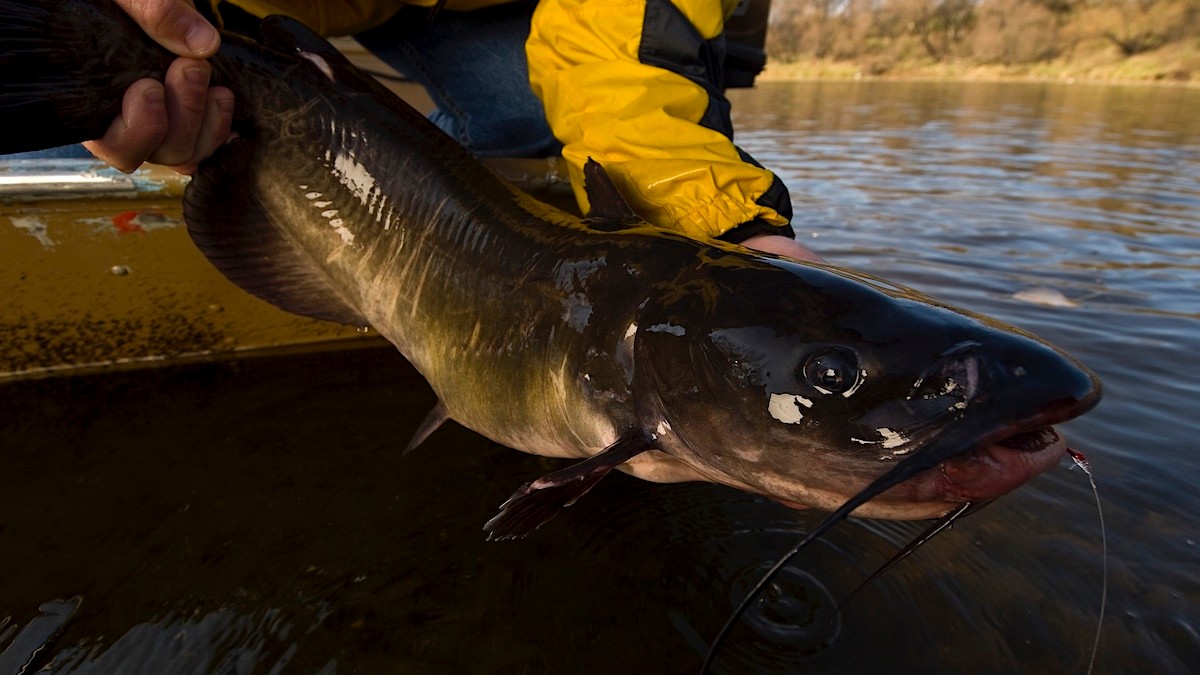
For my money, there’s no better way to spend a summer evening than catching channel catfish off the dock. I love the simplicity of it—no fancy boats, no expensive gear, no complicated rigs—just soaking bait and drinking beers with buddies, waiting on the next bite.
Some people consider channel cats a trash fish, but that couldn’t be further from the truth: they can weigh upwards of 20 pounds, fight hard as hell, and taste delicious. While I love to find them anywhere they live, I really love to see them swimming in my deep fryer.
My favorite thing about this species is their accessibility. With a range stretching from northern Mexico to the southern reaches of Canada and from one coast to the other, the fishery is accessible to most North Americans.
How to Rig for Channel Catfish When it comes to channel catfish, simpler is better. My favorite rig is as follows:
- Bobber stop and slip bobber
- Egg sinker
- Micro swivel
- 10- to 15-pound fluorocarbon leader
- 2/0 or 3/0 octopus-style hook
This is one of the most basic rigs I can think of, and my go-to for catching channel catfish. Simply slip on the bobber stop, the slip bobber, and the egg sinker, in that order. Then tie on the micro swivel followed by a 2- to 3-foot section of leader. Lastly, tie on your hook. Your standard fishing knot will work, but a snell knot is better.
While this rig is deadly with a big nightcrawler, my preferred bait is a large shiner. With live bait, it’s important to make sure that the length of your leader is shorter than the length between your swivel and bobber. If your leader is longer than the bobber depth, the shiner will often swim over your main line and tangle your rig.
This setup is great for keeping your bait suspended just above the bottom. Catfish will cruise shorelines, weed edges, and other transitions at night, so try to identify these areas in the daylight for proper presentation. However, if there is any wind or current, a bobber rig can actually make your life more difficult.
Resident chunk-fishing guru and Bent Podcast host Joe Cermele often opts for a similar rig when targeting channel cats, but omits the bobber.
“I keep things pretty simple for channels,” Joe said. “I snell a 2/0 circle hook on 2 feet of 20-pound fluoro, connecting it to my mainline with a small barrel swivel. Above the swivel, I have a bead and sinker slide that rides freely on the mainline.”
That setup allows the bait to rest on the bottom without drifting on any current or wind. Catfish will often take a little time to fully engulf bait. The slip sinker lets you “feed” the fish, letting out line so the cat can travel with it a ways while they work it into their mouth before you set the hook.
How to Choose Bait for Channel Catfish. While I often opt for the largest shiners I can, Joe prefers natural cut baits.
“On the waters I fish in the Northeast, I've noticed that the bigger cats tend to eat natural baits faster. I'm a firm believer in matching natural forage as often as possible, so I prefer cut bluegill to dough bait or grocery store baits like chicken and hotdogs.”
He recognizes, however, that depending on your local fish and game regulations, natural cut bait like bream isn’t always a legally viable option—but there’s a convenient alternative.
“In some states, it’s illegal to use gamefish like bass or bluegills as cutbait. If you can't get your hands on anything to chunk up from the lake you're fishing, try tilapia. It's available in almost every grocery store these days, and in a pinch, I've been very successful using it for big channel cats.”
While flathead catfish typically only eat live bait, channels and blues are not so picky. As scavengers, they’re relatively likely to eat anything that smells good. Older, larger fish may be more selective than younger, “fiddler” cats, but it does pay to experiment. If you can legally place multiple lines per angler, try putting a chunk of fish on one, a worm on another, and maybe some catfish stinkbait, chicken gizzard, or cheese ball on the third. If one begins producing, switch the other rigs to that bait type.
How to Hook Catfish Easily the best part about catfishing is its passive nature. You cast out your rig, jam the rod butt in a holder, ground spike, or just lean it against a forked stick and lean back and sip your beverage. This great technique is further enhanced by a group of friends and a bonfire nearby.
However, as any cat angler will tell you, it’s not always that simple. Catfish will often nibble at a bait or grab the edge of it and swim aways before taking it fully in their mouth. If you rear back on the rod as soon as the tip starts to tap, you’ll likely miss a lot of fish.
If you can handle the suspense, it’s actually better to give the fish a little time to eat. This can be aided by putting your reel on light drag, preferably with a clicker if it has one. I like to count to 10 before setting the hook, but it’s a matter of personal preference. With larger catfish, they’re often just hooked up and running so there’s no need to wait.
Just Go For It No matter which method you choose to target them, channel catfishing can be some of the most fun fishing you’ll do all summer. So grab a couple beers, a couple buddies, a bucket full of shiners, and make a night out of it. Chances are some big fish and good times are just a short drive away.
Feature image via Bill Lindner Photography.





Conversation